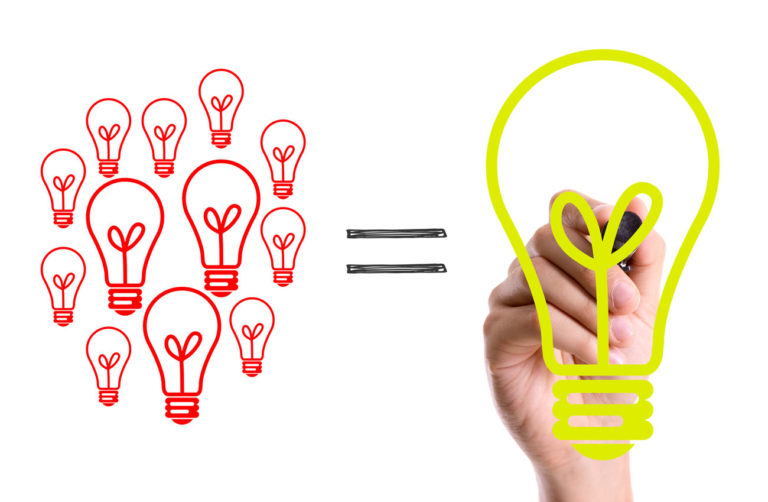Concepting as a step in the design process that over and over. The first concepting step is your original idea. If you are an inventor, you likely have created the idea a few times in your head. Maybe you’ve played with some rough (or detailed) prototypes. Even if you aren’t an “inventor”, maybe you work at a large company, you are still inventing and concepting. You’ve created a concept. Maybe it’s only one version and just barely an idea, but it’s there.
Concepting, and we like to call it ideation a lot of the time, happens throughout the process. When we’re talking about a phase of product development often called ideation, we’re talking about the first step after research. In the Peterman Method™, our internal conscious design process, ideation happens in phase 2 some, at a high level. Then its main time is in phase 3, the design phase.

Ideation is the processes of both expanding and refining an idea, but doesn’t end in selection of a direction. This is a crucial point in the creative process to develop a product. Skipping and skimping this part results in poorly thought out products. Not only are they not the best fit for users, it doesn’t work for you, the person producing it. Ideation is the process of taking a single idea and expanding upon it through a process of exploration and concept generation.
When Concepting Happens

For design firms, this usually means taking a client’s idea or problem and generating a series of concepts. These are just ideas that have been put to paper, typically sketches, but sometimes CAD or physical models. The point of concepts and ideation isn’t to get stuck in the details. A lot of high-level thinking and outlining happens. That said, detail notes and sketches created when needed to clarify or explain. Again, the whole point is to communicate a concept quickly and completely to anyone who looks at it. It can even be words if you happen to be an amazing word smith. Visual however, is always best.
This phase of the design process generates the largest amount of ideas. Once we have the ideas, we then cut down in review. This cycle is repeated as long as needed, or the budget will allow. Often with startups and smaller projects we do 2-3 rounds to keep budgets low. However, with luxury products or complicated problems, you could go 20 rounds of concepts, models, and sketches before we make a final selection.
I’d like to make this process as easy as possible for everyone, it makes projects go smoother. So, here are 5 things to keep in mind while successfully going through the concepting phase with your product developer.
1. Have your documents together
You should being everything you can to your designer as soon as an NDA is in place. Any sketches, descriptions, images, reference images of similar products, and anything else that might help describe your idea. It may seem silly to have to put this here, but it’s important. Skipping this makes the process take longer because we can’t start without this information from you. You will also likely bring all this again for your kick-off meeting.

2. Give edits for every concepting round

Client feedback is key to a successful project.
Ian Peterman, CEO Tweet
Almost every ideation process includes several rounds of ideation, where concepts are narrowed down, before more are created. To help with this, make sure you’ve spent plenty of time reviewing the concepts. Also, the best form of communication is visual. Red-line and mark up the concepts that were presented to you. Take your time but try to send them to your designer before meeting. This gives them time to review and think about your thoughts before discussing the concepts. The result is better ideas from your designer because they have spent some time on it already.
3. Quantity vs Quality
In ideation, quantity is a great place to start, but you should always aim to end with quality.
Ian Peterman, CEO Tweet
At the start of the ideation process, quantity is usually preferred to quality. You should be a part of this. Put out your ideas, even if they don’t seem the best. Having a ton of ideas put out there, even if they aren’t all winners, is part of the process.

You want as many concepts as you can get, within reason and budget. However, you’ll see concept quality increase as the quantity decreases. This is because of a shift of focus, from maximum ideas to best ideas. So, don’t worry if you see what seems like lower quality concepts at first. This is a process that has worked for millions of products at this point.
4. Know your why

Without knowing your why, it's hard to guide any process, let alone coming up with valuable solutions.
Ian Peterman, CEO Tweet
While it’s commonly expected for a product developer or designer to be able to give reasoning behind their ideas. You should know your why too. Concepting is almost impossible to do effectively when you don’t know your why. Being able to communicate why you want to change something is a huge help to your designer.
Why you think a certain feature should be changed, for example, will allow your developer to create a better solution. Your input will help guide them toward the product that will fit your needs best. Without a why, you could be missing out on a better solution that you were thinking of.
5. Clear communication = Clear Concepting
Clear communication doesn't mean being the best speaker or sketcher, it means explaining your ideas in a way people can understand, whatever that means for you.
Ian Peterman, CEO Tweet
I can’t stress this enough. It doesn’t mean having the best sketches, or CAD, or being able to write like a bestselling author. It means making sure your thoughts are communicated to the designer, and that you are understood. Sometimes things don’t click the first time for a developer. We are human, after all. Typically, we prefer information overload over to not enough.

Explain your idea, your product, your why, all of it, and multiple ways doesn’t hurt. With that said, if you have to tell someone something too many times, you probably should find a different designer or developer. You should be working with an expert. It’s important that you are comfortable with the level of understanding your product developer has.
If they don’t understand fully, it causes avoidable mistakes and issues, which are the worst kind. It’s a two-way street and you need to communicate clearly just as much as your designer does. It’s also the job of a good developer to make sure they understand your idea. When both of those things happen, then everyone can walk away knowing that the idea is understood, and no time will be wasted going down the wrong path.
If you follow these 5 things, you’ll be making the most of the ideation/concepting process. This means a smoother project that in the end will make you happier. Having this process go smoothly will help set the tone for the rest of the project. We at the Peterman Firm are experts at walking both experienced and new clients through this process. It’s why we were able to build the Peterman Method™ to walk our clients through the entire product development process.
Your Next Steps
Related Conscious Design BLOG Posts
5 Tips to Creating Your Product Launch Plan
NASA isn’t the only place that should have a launch plan! After all of your time and money spent polishing your product the launch is
2 Tools you Should use with Your Developer
When working with a product developer, there are two types of programs you should be familiar with. While there are many options for each one,
Our Top 6 Client Communication Tips
Client communication is important to every businesses success. Whether it’s one on one, over mass email, or through social media, good communication helps your customers connect and stay with you.


